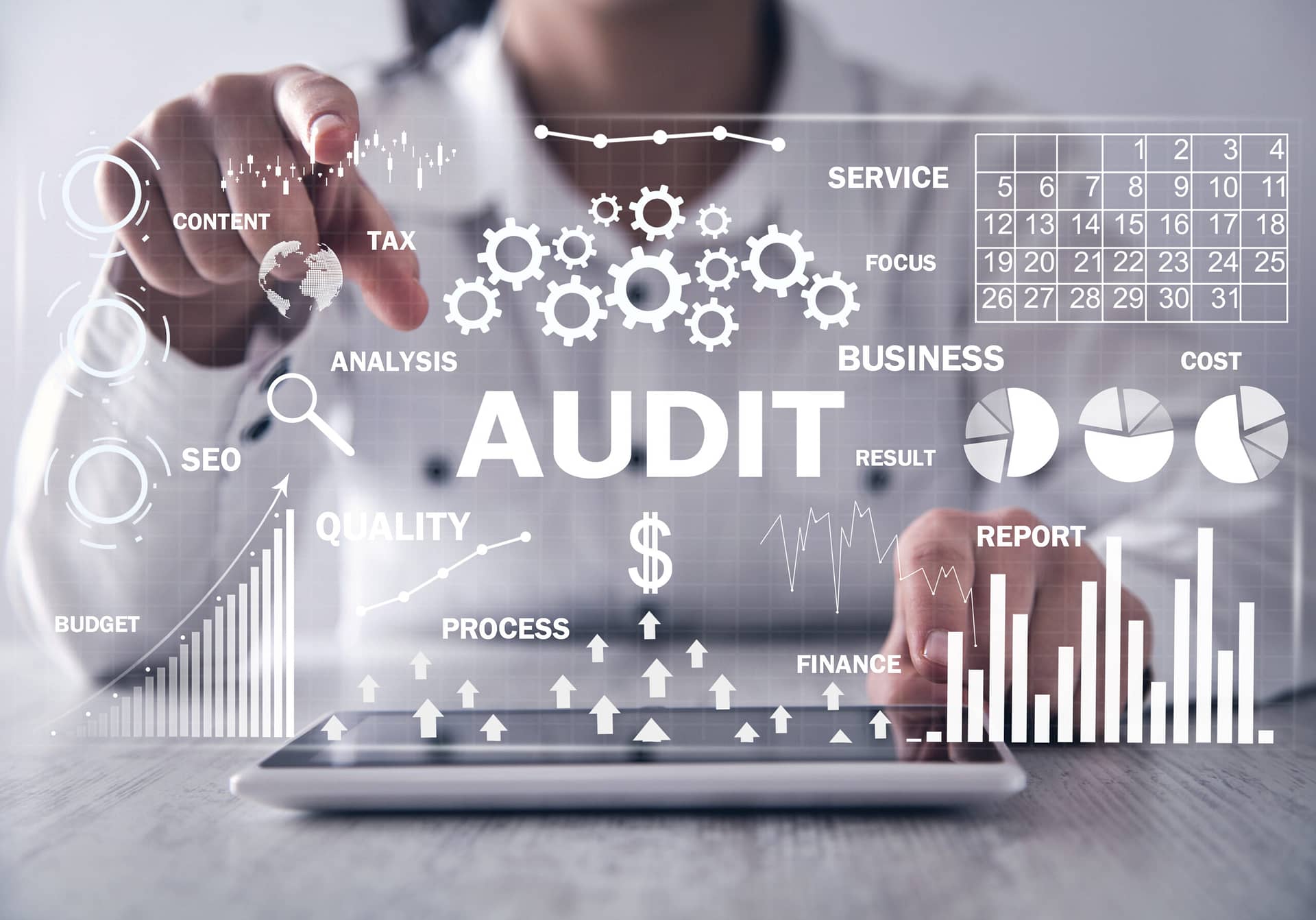In the fast-paced digital world, having a website is not enough. You must ensure it’s optimized for search engines to drive organic traffic. That’s where an SEO audit comes in.
An SEO audit isn’t a one-time task—it’s a continuous process. It analyzes how well your web presence relates to best practices and is the first step in creating an implementation plan that will yield measurable results.
So, let’s explore the world of SEO audits, unraveling its complexities and discovering how it can be your secret weapon for digital success.
Understanding SEO Audit
It’s important to understand SEO audits’ entailment before diving deeper into them. At its core, an SEO audit involves a systematic examination of a website to assess its capacity to appear in search engine results pages (SERPs). It’s essentially a health check for your website, examining technical infrastructure, on-page and off-page elements to determine their efficiency.
Components of an SEO Audit
Key components of an SEO audit typically include:
- Technical Analysis allocates effort to ensure search engines can easily crawl and index your website. It includes aspects such as site speed, mobile optimization, and XML sitemap accessibility.
- On-page analysis includes reviewing meta-tags, keyword usage, content quality, and user-friendliness of your website’s navigation and design.
- Off-page analysis evaluates elements outside your website that can affect its ranking, such as backlinks. High-quality, relevant backlinks from authoritative sites aid site visibility.
- Competitive Analysis and Keyword Research targets the identification of keywords and content strategies implemented by competitors, allowing improvements to your website’s SEO strategy.
Benefits of an SEO Audit
Regular SEO audits bring several benefits:
- Identifying Weaknesses and Opportunities: An audit identifies weaknesses and opportunities on your website.
- Informed Decision Making: By providing a comprehensive view of your website’s SEO status, audits help make informed changes and measure their impact.
- Maintaining Relevance: Regular audits ensure the website remains relevant by adapting to search engine algorithm updates.
- Enhancing User Experience: Audits highlight website design or navigation areas that may deter users and search engines.
By deciphering the need for changes in technical aspects, on-page, off-page, and competitive elements, SEO audits become an essential addition to your digital toolbox. There’s no doubt that meticulous SEO audits pave the way for business growth in the digital world.
The Importance of SEO Audit
Recognizing an SEO audit’s implications helps illuminate its role as a vital tool in the digital landscape. It’s a rigorous process that examines multiple elements on a website. These elements encompass technical, on-page, and off-page components, all of which have an integral role in enhancing website visibility on search engine results pages.
While the SEO audit process entails several robust components, each brings unique value. The technical evaluation ensures that the website’s backbone, coding, and structure provide a seamless user evaluation that site speed analysis and typically involves experience. The mobile-friendly checks and a search for broken links or 404 errors.
On the other hand, on-page analysis aims to scrutinize a website’s keyword optimization, gauging the effectiveness of meta titles, descriptions, and content optimization against core keywords. On the other hand, a thorough off-page examination assesses the quality and quantity of backlinks pointing back to the website, a key factor influencing a page’s authority and rank.
Supplementing these evaluations, a competitive analysis identifies key strategies employed by competitors that are yielding results. This analysis offers valuable insights that lead to informed decisions, aiding in staying relevant in the dynamic digital realm. Lastly, the crux of an SEO audit, keyword research, enables the identification of leading trends and keywords in one’s industry, which paves the way for strategic content planning and optimization.
Regular SEO audits bring numerous benefits to the table, proving them to be a cornerstone for online growth. They aid in identifying shortfalls in current SEO strategies, paving the path for informed decision-making and strategic reassessments. Consistent SEO audits also ensure relevancy in the fast-paced digital landscape, a necessity in securing top spots in search engine rankings. Lastly, enhancing user experience is a tangible reward that stems from regular SEO audits, as a well-optimized site results in increased user engagement.
To sum up, SEO audits are instrumental in the digital landscape. More than a mere tool, they’re an essential asset in one’s digital toolbox for business growth. They facilitate revamping SEO tactics, fuel informed decisions, aid in staying relevant and bolster the overall user experience. With regular SEO audits in place, one’s website stands a better chance of ranking higher, attracting more organic traffic, and ultimately driving business growth.
Tools Required for Effective SEO Audit
The workhorse behind successful SEO audits is a suite of reliable tools. This section reveals the toolbox necessary for conducting a thorough SEO audit.
Analyzing Your Website’s Performance
As a notable part of SEO audits, analyzing your website’s performance is critical. The Google Analytics tool emerges as a trusted ally in this process. It extensively analyzes your site’s performance by shedding light on aspects like site traffic, user behavior, etc. Furthermore, Google’s Search Console pitches in, offering insights into how your site appears in search results and pinpointing technical issues. In addition, SEMrush, with its broad range of tracking facilities, aids in tracking your keyword rankings while also comparing your performance with your competitors.
Identifying SEO Problems
Recognizing SEO issues serves as the catalyst for optimizing your site. Tools like Screaming Frog and MOZ Pro streamline this process. Screaming Frog thoroughly audits your on-page SEO, covering URLs, page titles, meta descriptions, and broken links. Meanwhile, Moz Pro stands tall with its ability to recognize a wide array of issues that could hold your site back, such as slow load times or broken redirect chains. It also helps spot opportunities for improvement, like missing h1 tags or inadequate internal linking.
Fixing Technical Errors
The resolution of technical errors represents the climax of an effective SEO audit. You can use Google’s PageSpeed Insights to uncover and rectify potential performance issues. It deciphers your site’s load times, identifying slow areas and suggesting actionable improvements. Besides, tools like Pingdom and GTmetrix provide in-depth analyses of your website’s speed, identifying elements that may slow it down. Armed with these suggestions, you’re now fully poised to correct inconsistencies and ensure your site runs smoothly and efficiently.
Steps to Conduct a Comprehensive SEO Audit
I’m about to provide you with a step-by-step guide on conducting an SEO Audit effectively and efficiently. Ready? Let’s get started.
Checking for Indexing Issues
Understanding indexing issues forms the cornerstone of any SEO audit. Websites might have poor visibility if search engines can’t access and index their content. I tend to start by verifying website indexing through Google’s “site:” operator. It’s critical to cross-reference this information with the number of indexed pages reported in the Google Search Console.
Identifying Duplicate Versions of Your Site
Duplicate content confuses search engines and impacts your site’s ranking. I perform a site duplication check by typing different variations of your URL into the browser. HTTP, HTTPS, www, and non-www versions can exist separately, so setting up a proper 301 redirect and canonical tags is essential.
Running a Site Crawl
During an SEO audit, running a site crawl provides a snapshot of your website’s health. Tools like Screaming Frog SEO Spider or SEMrush’s Site Audit can help identify issues such as broken links, 404 errors, missing meta descriptions, or prolonged title tags.
Evaluating the Mobile-Friendliness of Your Site
Nowadays, mobile optimization is a ranking factor. Google’s Mobile-Friendly Test tool allows me to investigate whether a website is optimized for mobile users. The analysis includes checking for mobile usability issues like small text, clickable elements too close together, and content wider than the screen.
Analyzing the Site’s Speed and Core Web Vitals
A slow website affects user experience and ranking. I use Google’s PageSpeed Insights and Lighthouse tools to analyze site speed and core web vitals. They help me identify and address issues that cause lag.
Inspecting Internal Links Structure
An efficient internal linking strategy promotes a seamless user experience and boosts your SEO. Using tools like Ahrefs or Moz, I can inspect your site’s internal link structure, identify orphan pages and unnecessary redirects, and ensure anchor texts are effectively utilized.
Reviewing Organic Traffic
Understanding how users find your website is vital. Hence, an SEO audit includes reviewing organic traffic statistics through Google Analytics. The goal is to identify trends, comprehend user behavior, and highlight opportunities for improvement.
Benchmarking Against Competitors
Competitor analysis provides insights to capitalize on and outmaneuver your competitors. Tools like SEMrush’s Domain Overview allow me to benchmark your site against competitors based on metrics, keywords, backlinks, and organic traffic.
Discovering Missed Keywords and Backlink Opportunities
Identifying missed keyword opportunities and potential backlinks is part of a comprehensive SEO audit. Tools like SEMRush’s Keyword Gap and Backlink Gap tools help uncover these possibilities.
Auditing and Improving Top Pages
By analyzing the traffic, conversion, and bounce rates of the top pages, I get insights into what content resonates with your target audience and boosts SEO. Then, I optimize these pages for relevancy, quality of content, and keyword usage.
Monitoring Site Rankings
Keeping an eye on your site’s ranking for target keywords informs you about your SEO performance. Tools like Google Search Console and Ahrefs’ Rank Tracker become helpful here, pinpointing the changes in your site’s ranking over time.
Remember, an optimized website starts with a thorough SEO audit. By following these steps, you’ll gain valuable insights to leverage for your website’s success.
Tips to Maximize the Outcome of Your SEO Audit
Certain actions prove highly beneficial in taking your SEO audit to the next level. Here, we’ll explore five of these: optimization for user experience, speed, resolving indexing issues and broken links, backlink audits, and competitor analysis.
Optimization for User Experience
User experience sits at the center of SEO best practices. Ensuring an excellent user interface for all devices is crucial to improve visitor engagement and boost conversion rates is crucial. To maximize user experience, focus on streamlining navigation, reducing page load time, and ensuring a responsive design. Maintain consistency in design elements such as color, layout, and typography across all pages, facilitating familiar navigation and a seamless user journey. Additionally, make the content easily digestible by using bullets, subheadings, and short paragraphs. Examples include interweaving essential keywords in headings and images, keeping blocks of text to four lines or less, and using simple, accessible language.
Optimization for Speed (Core Web Vitals)
Google’s Core Web Vitals is a set of metrics aiming to analyze the speed, responsiveness, and visual stability of websites. LCP (Largest Contentful Paint), FID (First Input Delay), and CLS (Cumulative Layout Shift) form the three metrics in this set. LCP measures loading speed, FID gauges interactivity, and CLS assesses visual stability. To enhance these metrics, focus on techniques such as minimizing CSS and JavaScript, optimizing images, leveraging browser caching, and using a CDN (Content Delivery Network).
Resolving Indexing Problems and Broken Links
Website indexing and link integrity form crucial aspects of an SEO audit. Indexation issues and broken links can significantly lower your site’s visibility and impede traffic. Therefore, it’s essential to use Google Search Console to monitor indexing status and fix any problems promptly. Additionally, you need regular audits to identify and fix broken links, which may lead to poor user experience and lost ranking opportunities.
Backlink Audit
Backlinks are crucial indicators of your website’s authority and relevance in SEO. In a backlink audit, you scrutinize the value offered by each incoming link. Audit steps include evaluating the domain authority of linking sites, scrutinizing the relevance of linked content, and checking the distribution of follow vs. no-follow links. Not only does a backlink audit help unveil potential opportunities or threats, but it also provides insight into your website’s standing in the online domain.
Analyzing Competitors for Improved Content Strategy
Studying your competitors’ SEO strategies can offer valuable insights into improving your own. For example, assessing the keyword usage, content length, backlink pool, and social media promotion tactics of top-ranking competitors can offer tangible pointers for enhancing your content efforts. Additionally, tools like SEMrush and Moz Pro provide in-depth competitive analysis, helping you stay ahead in the digital sphere.
Post-Audit Actions: Taking Your Site’s SEO to the Next Level
Completing SEO audits provides a variety of insights that, if implemented well, can enhance website performance and organic traffic considerably. Let’s delve into a series of post-audit actions that you can execute to take your site’s SEO to the next level.
Implement SEO Audit Recommendations
The first and critical step post-audit is implementing the recommendations. These can include, among other things, resolving indexing issues, fixing broken links, and improving page speed. For example, using tools such as Google Search Console can help address and resolve indexing problems. Likewise, GTmetrix and Pingdom can enhance your webpage’s speed, ensuring faster load times and improved user experience.
Upgrade Your Content Strategy
Another pivotal area to address is your content strategy. Based on comprehensive competitor analysis using tools like SEMrush and Moz Pro, it’s crucial to create unique, value-adding content strategically positioned to outperform the competition. Regularly updating this enhanced content fosters better user engagement, consequently improving your site’s SEO ranking.
Boost Local SEO
Focusing on local SEO can prove immensely beneficial for businesses with a local customer base. Claiming your business listing on Google Business Profile, optimizing it with relevant information, and encouraging customer reviews lets Google rank you higher in local search results, thus broadening your reach.
Optimize Mobile User Experience
With increasing users accessing the internet through mobile devices, optimizing mobile user experience post-SEO audit is paramount. Responsive design, simplified navigation, and faster load times contribute to a better mobile user experience, culminating in better site rankings.
Integrate Social Media Handles
Effective integration of social media handles can also yield significant SEO rewards. Including direct links to your channels on your website, regularly sharing engaging content, and encouraging user interactions and shares can enhance your online visibility and traffic.
When performed correctly, all these post-audit actions provide my website with the needed push to achieve optimal SEO performance. Remember, this isn’t a one-off process; SEO performs best with continuous monitoring, adjustments, and enhancements to meet the ever-evolving digital landscape.
Conclusion
Having walked you through the SEO audit process, I hope you’ve understood its significance in optimizing your website’s performance. Remember, it’s not a one-time task but a continuous process that demands regular monitoring and adjustments. By resolving indexing issues, enhancing page speed, and refining your content strategy, you’re taking giant strides toward improved organic traffic. Don’t overlook the power of local SEO and social media integration, as they can significantly boost your visibility. So, go ahead and implement these strategies. Stay ahead in this ever-evolving digital landscape. It’s time to make your mark!



